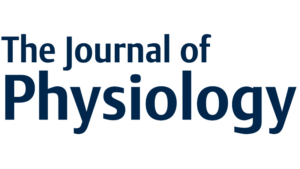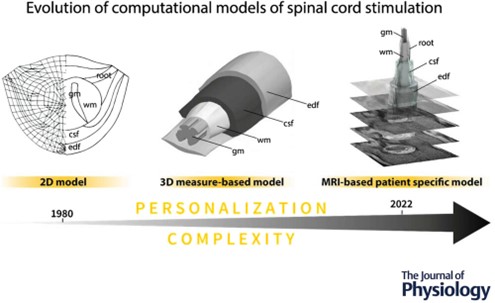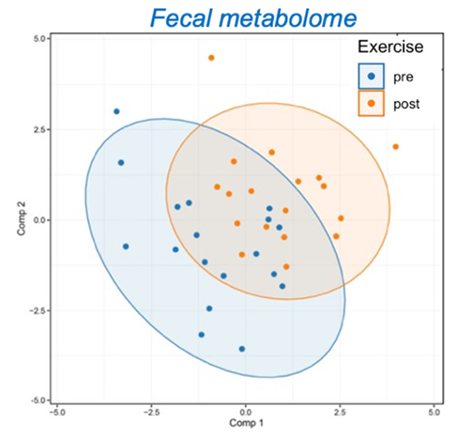
Physiology News Magazine
Journal insights
News and Views
Journal insights
News and Views
https://doi.org/10.36866/pn.131.12

Active glucose transport varies by small intestinal region and oestrous cycle stage in mice
Overduin TS et al. (Feb 2023) https://doi.org/10.1113/EP091040
Food intake and blood glucose levels following test meals in women change across different phases of the menstrual cycle, with a peak in the luteal phase. These changes are thought to be related to circulating sex hormone levels. However, it has not been shown whether the active absorption of glucose by the sodium-glucose transporter (SGLT) 1 changes in different phases of the oestrus cycle. In this study, the regional and cyclical differences of SGLT1-mediated glucose absorption were investigated in female C57Bl/6JSAH mice. Glucose transport was highest in the distal jejunum. Using the jejunum, the oestrus cycle-specific phases of glucose absorption by SGLT1 were then investigated. In pro-oestrus (late follicular phase), SGLT1-mediated glucose transport was found to be higher than in oestrus (early luteal phase). These results provide a partial explanation for the increased blood glucose responses observed, which may be due to more glucose transport. While specific hormone levels were not measured, this study may be important for people with dysregulated hormone levels, such as in polycystic ovarian syndrome, where insulin resistance and obesity are often comorbidities, or in pregnancy and lactation, where changes in food intake and hormone levels are sustained for a longer period of time.

pro-oestrus phase compared to oestrus phase

A systematic review of computational models for the design of spinal cord stimulation therapies: from neural circuits to patient-specific simulations
Liang L et al. (Nov 2022) https://doi.org/10.1113/JP282884
A mathematical model describing action potential generation published by Hodgkin and Huxley in 1952 underpinned development of computer modelling for electrophysiological applications. One such application is spinal cord stimulation (SCS), which is primarily used to treat chronic pain and restore movement. Simulations have been used to influence SCS clinically by contributing to lead design, stimulation configurations, waveform design and programming protocols. As models for SCS have evolved, they have increased in number and complexity; it is important to establish if this complexity is necessary for increased accuracy and clinical efficacy.
Accordingly, articles were identified following a systematic literature search. Models of neurostimulation rely on both electrophysiological principles as well as anatomically based, three-dimensional volume conductor models to estimate effects on neural membrane voltage. Therefore, the 87 papers identified for use included volume conductor models of the spinal cord and a computational model to simulate SCS-generated fields.
Reasons for increased complexity include a shift from two-dimensional to three-dimensional models, alongside the inclusion of more anatomical components. Additionally, recent use of medical imaging increases complexity, as well as allowing for use in patient-specific models. These changes demonstrate an improvement in translational and mechanistic studies. However, whilst recent studies increasingly use quantitative validation, metrics are inconsistent across the research, which hinders identification of clinically meaningful benchmarks.


Lower systemic nitric oxide bioactivity, cerebral hypoperfusion and accelerated cognitive decline in formerly concussed retired rugby union players
Owens TS et al. (July 2023) https://doi.org/10.1113/EP091195
Rugby union is a sport enjoyed by many; however, it is characterised by high incidents of contact-related injuries, the most concerning of all being concussions. Players that are concussed, are at greater risk of mild-cognitive impairment and chronic traumatic encephalopathy, which can lead to severe disabilities later in life. There are two proposed reasons for the above pathophysiology; firstly, the blunt forces experienced during repeated contact events promote mitochondrial dysfunction and elevate free radicals that scavenge nitric oxide (NO) molecules and secondly, the same mechanical forces can compromise structural integrity of neuronal networks. To investigate this, the study recruited 22 retired rugby players (regional and international level, aged 64 ± 5 years) who had incurred at least 3 concussions over their playing careers and cross-sectionally compared them against 22 age-fitness-and-education matched control participants who had never been diagnosed with concussion or participated in contact sports. The researchers found that the retired players suffered significantly from concussion-related symptoms, namely headache and pressure build-up in the cervical and cranial regions, which was accompanied by psychological issues of increased anxiety, lack of concentration and emotional stability, memory loss and difficulty in falling asleep. More importantly, NO, a key player in maintaining cardiovascular homeostasis, was found to be less systemically available compared to the control group. Additionally, the lower bioavailability of NO was accompanied by lower middle-cerebral artery velocity and cerebral oxygen delivery at rest and during hyper/hypocapnia. The study confirms a potential mechanism for cognitive decline in rugby players and calls for further longitudinal research along with development of methods for assessing neurovascular damage. To conclude, concussion is “NO” joke and must be a key agenda at the organisational level of the sport.

players, n = 20.

Exercise training modifies xenometabolites in gut and circulation of lean and obese adults
Kasperek MC et al. (March 2023)http://doi.org/10.14814/phy2.15638
The human gut microbiome—an adaptable ecosystem of microorganisms—may influence host physiology through the microbial production and modification of metabolites (xenometabolites). The interplay between the microbiota and the human body/host remains to be fully understood. This study explored the influence of 6 weeks of moderate-to-vigorous intensity aerobic exercise training (60%-75% heart rate reserve, 30-60 min, 3 times a week) on the faecal and serum xenometabolome in sedentary, lean (n = 15) and obese (n = 9) adults. Multiple faecal and serum xenometabolites (obtained pre and post the 6-week intervention) responded to exercise training, with the most prominent changes within aromatic amino acid metabolic pathways. Faecal and serum aromatic amino acid derivatives were associated with body composition, and markers of insulin sensitivity and cardiorespiratory fitness. Two serum aromatic microbial-derived amino acid metabolites that were upregulated in response to exercise share metabolic pathways within the microbiota and were associated with body composition and markers of insulin sensitivity pre- and post-intervention. This study demonstrates that microbial- and host-derived metabolites respond to aerobic exercise training, and that body composition is an important factor that influences these responses. This study reinforces the view that host metabolic health influences gut microbiota population and function.


Impaired lower limb muscle mass, quality and function in end stage liver disease: A cross-sectional study
Quinlan J et al. (May 2023)https://doi.org/10.1113/EP091157
Patients with end-stage liver disease (ESLD) commonly experience decreased muscle mass (sarcopenia), which impairs their quality of life and reduces their survival even after liver transplantation. In this article, authors used ultrasonography, magnetic resonance imaging, anatomical measurements and physiological tests to calculate multiple indices that evaluate mass, quality and function of the quadriceps muscle in 39 patients with ESLD and 18 age- and sex-matched healthy control subjects. They also did L3 skeletal muscle index (SMI) and mid-arm muscle circumference (MAMC), which are the conventionally used tests to assess sarcopenia. Results showed significantly reduced mass and volume of the quadriceps muscle, with increased quadriceps intermuscular adipose tissue. Physiological assessment by the handgrip strength, peak knee extensor isokinetic torque, and chair rise time revealed significantly reduced muscle strength in ESLD. However, the conventional L3 SMI and MAMC showed no significant change in ESDL patients versus control subjects. The conclusion was that assessment of sarcopenia in ESLD should focus on testing the mass, quality and function of the quadriceps muscle rather than doing the conventional tests, which assess other muscles. Early identification of sarcopenia in these patients allows timely intervention to try to improve their quality of life and reduce mortality.

